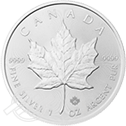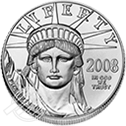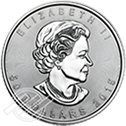How to Invest in a Gold IRA
The Gold IRA has become the go-to vehicle for many investors looking to secure their portfolio with physical gold.
Investing in a Gold IRA is easy. This guide will help you:
- Decide a Gold IRA is right for you
- Find a custodian
- Open a Gold IRA account
- Fund your account
- Determine your fees
- Understand the rules of a Gold IRA
We hope to arm you with the information to make a wise decision and show you how buying gold with IRA funds is a fairly simple and straightforward process.

1. Decide if a Gold IRA is Right for You
Before committing any money to a Gold IRA, you must decide if it makes sense for your financial goals. If you have questions about a self-directed IRA, discuss them with a trusted financial advisor. Understanding the pros and cons of a Gold IRA or any other precious metals investment is essential to maximizing its success and minimizing your frustration or confusion.
Benefits of a Gold IRA
Gold IRAs offer investors significant benefits. These include possible hedging against inflation, a diversified portfolio, and specific tax advantages on the invested funds. Let’s walk through each of these benefits:
Hedge Against Inflation
As inflation grows, it erodes the spending power of every dollar. As inflation sets in, it takes more dollars to buy products today than it did yesterday. Unless wages keep up, the spending power of earners decreases over time.
Because gold is priced in dollars, it tends to increase in value as other goods become more expensive. Gold will typically cost more during inflationary times, just like most dollar-denominated products. Therefore, it helps preserve the dollars you initially purchased the gold with.
This is why investors refer to gold as a safe-haven investment. They view it as a safe vehicle to park investment funds to preserve buying power.
Portfolio Diversification
Gold can provide true diversification for your portfolio.
It offers a decoupling from the stock market. What this means in practice is that because physical gold is not directly tied to the daily fluctuations of the stock markets, it does not see the drastic shifts in price traditional investments like bonds or mutual funds might experience.
Large swings in sentiment usually affect all stocks. Over time, they tend to rise together or fall together. Gold, however, moves independently of those markets. Because of its worth as a safe-haven investment, gold will typically increase in value when the stock market indexes have large swings downward.
Tangible Ownership
You can hold physical gold in your hand. It cannot disappear with the touch of a button or even an executive order. Many investors covet gold because it cannot disappear, go bankrupt, or be acquired by a rival company.
The same gold you can physically hold today has been on this earth and held high value for thousands of years.
IRA Tax Advantages
IRAs are designed to be withdrawn later in life—starting at age 59½.
It is usually safe to assume that one’s income is less later in life than during their younger years. That means less earned income tax will be due on the money at the time of withdrawal. There are three types of IRAs available for Gold IRA investors. They are:
- Traditional IRAs
- Simplified employee pension (SEP) IRAs
- Roth IRAs
Traditional and SEP IRA owners make contributions with pre-tax dollars. Their withdrawals get taxed as earned income in the same year they withdraw.
Traditional and SEP IRA contributions are tax-deductible in the year an investor makes them, which can benefit the contributor.
Roth IRA contributions are after-tax, meaning the growth of the funds is not taxed if they are withdrawn during an eligible period.
Both styles of IRA investing can be advantageous. Please consult your tax professional or certified public accountant (CPA) for more details on which style works for you.
Disadvantages of a Gold IRA
Even though Gold IRAs offer plenty of benefits, investors should consider their disadvantages before purchasing gold or moving funds. These drawbacks include additional fees, potential illiquidity, and a sometimes complicated setup process.
Fees
Gold IRAs involve several fees that traditional IRAs do not. These fees include setup fees that can total around $100. Annual maintenance fees also offset the cost of gold storage and providing storage. These yearly fees range from $100 to $300.
Potential Illiquidity
Eventually, you’ll need to sell (liquidate) your gold to reap the benefits of ownership. A physical gold owner must find a buyer, transport the metals, and enact a safe transaction. If you don’t deal with a trusted Gold IRA dealer, you may have to take a withdrawal or handle large sums of cash.
Advantage Gold simplifies this process by handling liquidations in-house and depositing the funds into your IRA.
A Complicated Setup Process
Self-directed IRAs take a tiny bit of time to establish. In addition to applying, you’ll also need to fund the IRA and select the gold or other precious metals you want to own.
Seasoned Gold IRA firms like Advantage Gold offer trained account managers who can walk you through this process. We even liaise with the custodian of your gold to ensure correctly submitted paperwork and eliminate delays.
2. Find a Custodian
An IRA custodian is an IRS-approved institution—such as a bank or credit union—that ensures adherence to government rules and regulations.
The custodian keeps the account—meaning it holds the assets inside the IRA for safekeeping. The IRA’s custodian also does the requisite reporting back to the IRS and the account holder.
A reputable Gold IRA firm will typically partner with a specific custodian. That partnership affords familiarity with each other’s processes and helps ascertain timely solutions if any issues arise.
If your Gold IRA company’s custodial partner is not to your liking, you may certainly request to use the approved custodian of your choice.
3. Open a Gold IRA Account
After you’ve decided to invest in a Gold IRA, you must select a Gold IRA company.
Look for a company willing to educate and walk you through the steps.
The custodial application process is straightforward and typically relies on readily available information. Your account executive should be willing and able to lead you and explain what information is or is not necessary.
The process typically takes 30 minutes or less. After that, you will be the proud owner of a new self-directed IRA.
4. Add Funds to Your Account
Now that you have opened your new Gold IRA account, it is essential to remember that it starts empty. You must fund your IRA to acquire your gold coins and bars.
Each investor will add funds per their current needs and situation.
There are three typical methods for funding your Gold IRA:
- Rollover
- Transfer
- Cash
Rollover
An IRA rollover occurs by converting an existing tax-deferred retirement account—like a 401(k) or a 403(b)—to a Gold IRA. The rollover is allowed, tax-free and penalty-free, at age 59½ or if the previous account is from a previous employer.
The most common type of rollover is a direct rollover.
With a direct rollover, funds move directly from your old account into your new account. This eliminates the possibility of delays resulting in the transfer being deemed a withdrawal, which could lead to penalties and unintended tax consequences.
An indirect rollover occurs when funds are sent from your old account directly to you. You must deposit all the sent funds into a new tax-deferred account within 60 days, or they will be considered a withdrawal. Withdrawals may be subject to penalties and affect your taxable income, so be sure you can handle the responsibility before selecting this option.
Transfer
A transfer occurs when converting one IRA into another IRA.
The Gold IRA is a self-directed IRA, allowing you to own physical property inside the individual retirement account.
Most IRAs only allow traditional paper products. They must be converted into a self-directed IRA, which allows paper products and physical gold.
As with the rollover, a transfer may be direct or indirect.
Cash
Cash funding is a straightforward way to invest in a Gold IRA. If under the age of 50, you are allowed to contribute $6,500 per year toward your account. Those 50 and older can contribute up to $7,500 per year.
Remember that your yearly contribution is independent of any transfer or rollover, meaning transfers and rollovers don’t count toward your contribution limit.
You should also check with your tax advisor, as yearly contributions may be tax-deductible.
5. Determine Your Fees
There will be fees associated with your Gold IRA. While most investors find the fees nominal for services they cover, you still need to understand their structure.
- The application fee—usually less than $100—pays for opening and processing the application.
- The account fee varies and is usually based on how many facets of investing you’d like your IRA to cover. It could be as little as $95 for an IRA that only allows precious metals to as much as $300 for an IRA that enables ownership of metals, paper investments, real estate, and other vehicles.
- The yearly fee covers all custodial duties, like IRS reporting, account management, and account statements. The annual fee also usually covers depository fees, like safe storage and insurance.
Fees are typically billed yearly; you can pay them by check or credit card.
6. Understand Gold IRA Rules
Gold IRAs are subject to several rules shared with traditional IRAs and a few exclusive ones that only apply because of the physical assets involved.
Not all gold can be owned and stored inside a Gold IRA. Only products that the IRS approves and considers investment grade can be held in your account.
The IRS’s strict guidelines dictate the quality, purity, and origin of Gold IRA-eligible bars and coins:
- Gold bars and coins must be 99.5% pure.
- The coins must be new, uncirculated, in perfect physical condition, and come from government mints.
- Gold bars must be from approved manufacturers, which are typically firms that are traded on exchanges, such as COMEX.
Now that you understand how to invest in a Gold IRA and are comfortable buying gold with IRA funds, let’s examine the rules for withdrawing funds from your IRA.
You can withdraw from traditional, SEP, or Roth Gold IRAs at age 59½. There are some exceptions to the rule, but most withdrawals before that have a 10% early withdrawal penalty and are then taxed as ordinary income.
Beginning at age 59½, withdrawals are allowed without penalty. Traditional and SEP plan withdrawals are taxed as ordinary income, while Roth plan withdrawals are tax-free.
Open a Gold IRA Today
Now that you understand how to invest in a Gold IRA, you may be more comfortable buying gold with IRA funds. The rules enacted by the IRS make it possibly the safest way to own precious metals, and many investors would agree.
For the past decade, our highly trained account executives at Advantage Gold have helped investors understand and complete the Gold IRA process.
We look forward to making your experience as easy and painless as possible. Call or contact us, and we will walk with you on the path to gold ownership.
We at Advantage Gold are here and happy to help. We look forward to speaking with you soon.
Tags: buying gold with ira funds, how to invest in gold ira


